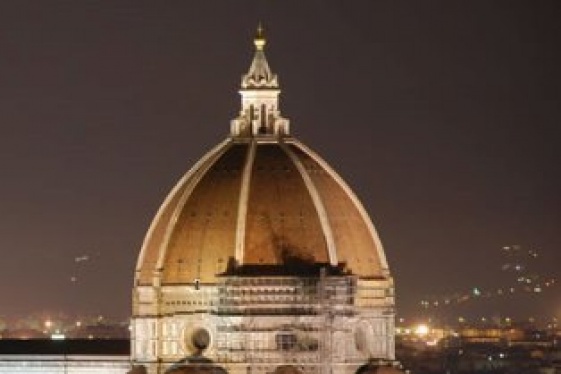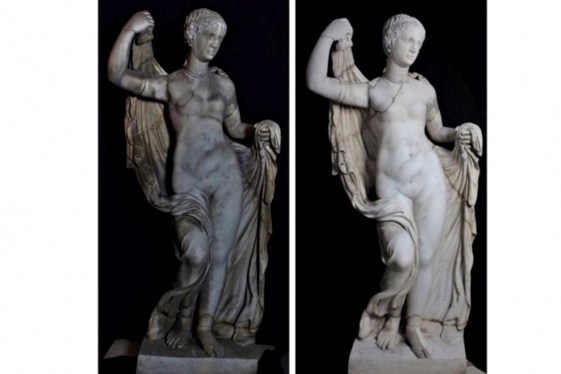

The Vasari Corridor, a remarkable 16th-century architectural masterpiece in Florence, has reopened to the public after a meticulous restoration project . This elevated passageway, an iconic symbol of Florence’s Renaissance heritage, offers visitors a unique opportunity to experience the city from the perspective of the Medici family, one of the most powerful and influential dynasties in European history.
Commissioned in 1565 by Duke Cosimo I de’ Medici, the Vasari Corridor was designed by Giorgio Vasari, a renowned architect and artist of the time. Stretching approximately 750 meters, the corridor connects the Uffizi Galleries, a prominent hub of Renaissance art, to the Pitti Palace and the Boboli Gardens, which served as the Medici’s royal residence.
The passageway was built as part of Cosimo I’s plan to consolidate his power and secure his family’s dominance in Florence.
The primary purpose of the corridor was to provide the Medici with a private and secure route between their home and the government offices, located in what is now the Uffizi Galleries. By avoiding the crowded streets, the Medici could traverse the city discreetly and safely, a necessity in a politically turbulent era.
The Vasari Corridor is an architectural marvel. Its design integrates seamlessly with Florence’s skyline, crossing iconic landmarks such as the Arno River and the Ponte Vecchio. The corridor features 73 small windows that offer stunning panoramic views of Florence, allowing the Medici to observe their city from a privileged vantage point. These windows also highlight the city's breathtaking architecture, the flowing Arno River, and the picturesque Ponte Vecchio, a historic bridge lined with shops.
Over the centuries, the Vasari Corridor has been a silent witness to Florence's evolution. In the 20th century, it played a unique role in modern history when it was visited by Adolf Hitler during a state visit in 1938. Benito Mussolini showcased the corridor as part of the grandeur of Italian heritage, and some of the corridor’s windows were enlarged to provide Hitler with a better view of the city—a modification that remains visible today.
The Vasari Corridor was closed to the public for several years due to safety concerns and the need for significant restoration. The recent restoration project focused on addressing structural integrity issues, improving accessibility, and preserving the historical elements that make the corridor a vital piece of Florence’s heritage. The reopening marks a new chapter for the corridor, offering visitors a chance to walk through history.
The restored corridor now allows access through guided tours, ensuring that visitors can fully appreciate its architectural brilliance and historical significance. These tours provide detailed insights into the Medici family’s influence on Florence, the purpose of the corridor, and its role in the city’s history.
The reopening of the Vasari Corridor adds a new dimension to Florence’s rich cultural offerings. It not only enhances the city’s status as a hub of Renaissance art and architecture but also provides a rare glimpse into the lives of the Medici, who shaped much of Florence’s history. Walking through the corridor, visitors can imagine the footsteps of the Medici family as they moved between the centers of power and their private residence.
The corridor’s reopening is expected to attract tourists, historians, and architecture enthusiasts from around the world. It stands as a testament to Florence’s enduring legacy as a cradle of art, culture, and innovation.
In summary, the Vasari Corridor’s restoration and public reopening represent a significant achievement in the preservation of Renaissance heritage. It offers a unique blend of historical insight, architectural beauty, and cultural experience, making it a must-visit destination for anyone exploring Florence.
You may be interested
-
Lecture and Concert that bring Italy to New...
Saturday, february 28 - 7 pm ESTChrist & Saint Stephen's Church - 120 W 69th St,...
-
'Buongiorno Papà' vince Nice Festival Usa
'Buongiorno papà' di Edoardo Leo, film sui quarantenni single in Italia, interpretato da R...
-
'Christmas I Remember Best': The Italian ceme...
Years ago our family spent an idyllic summer in beautiful Florence, Italy, the heart of Re...
-
'I inherited an Italian farmhouse and want ev...
At first I was excited. Then I was terrified. Now I cannot believe my luck. Like one of th...
-
'Love in Firenze' comes to The Addy at Procto...
Composer Ed Munger, 76, and lyricist Herb Weisburgh, 82, are a local songwriting duo who h...
-
'Mona Lisa's' identity could be revealed thro...
By Jamie Wetherbe The mystery of "Mona Lisa's" real-life muse, which has spawned centurie...
-
'Rediscovered Aphrodite' In Italy's National...
The recently restored statue of Aphrodite housed in the Museo Archeologico Nazionale (Nati...
-
'Saffron tourism' takes hold in Italy, harves...
Saffron tourism is the holiday of choice for a growing number of people fascinated by the...










